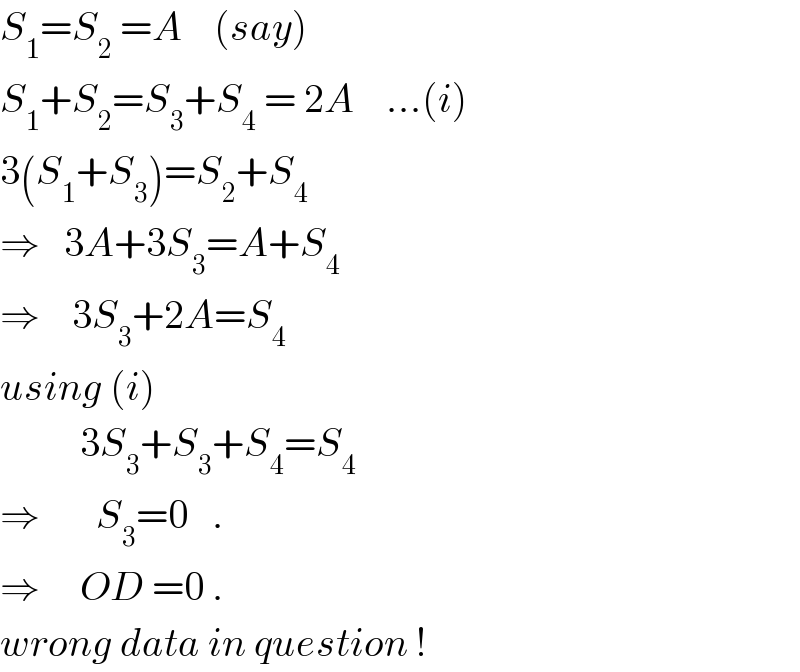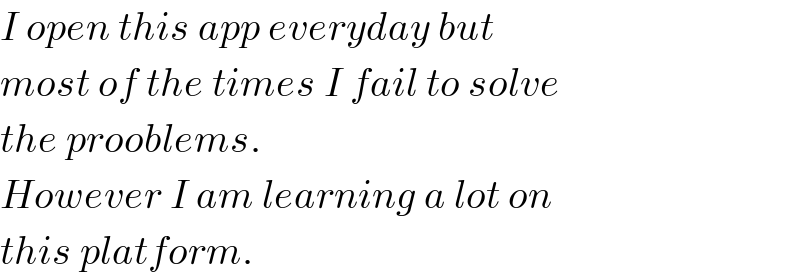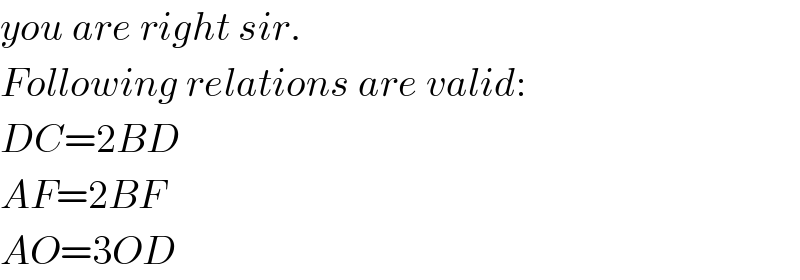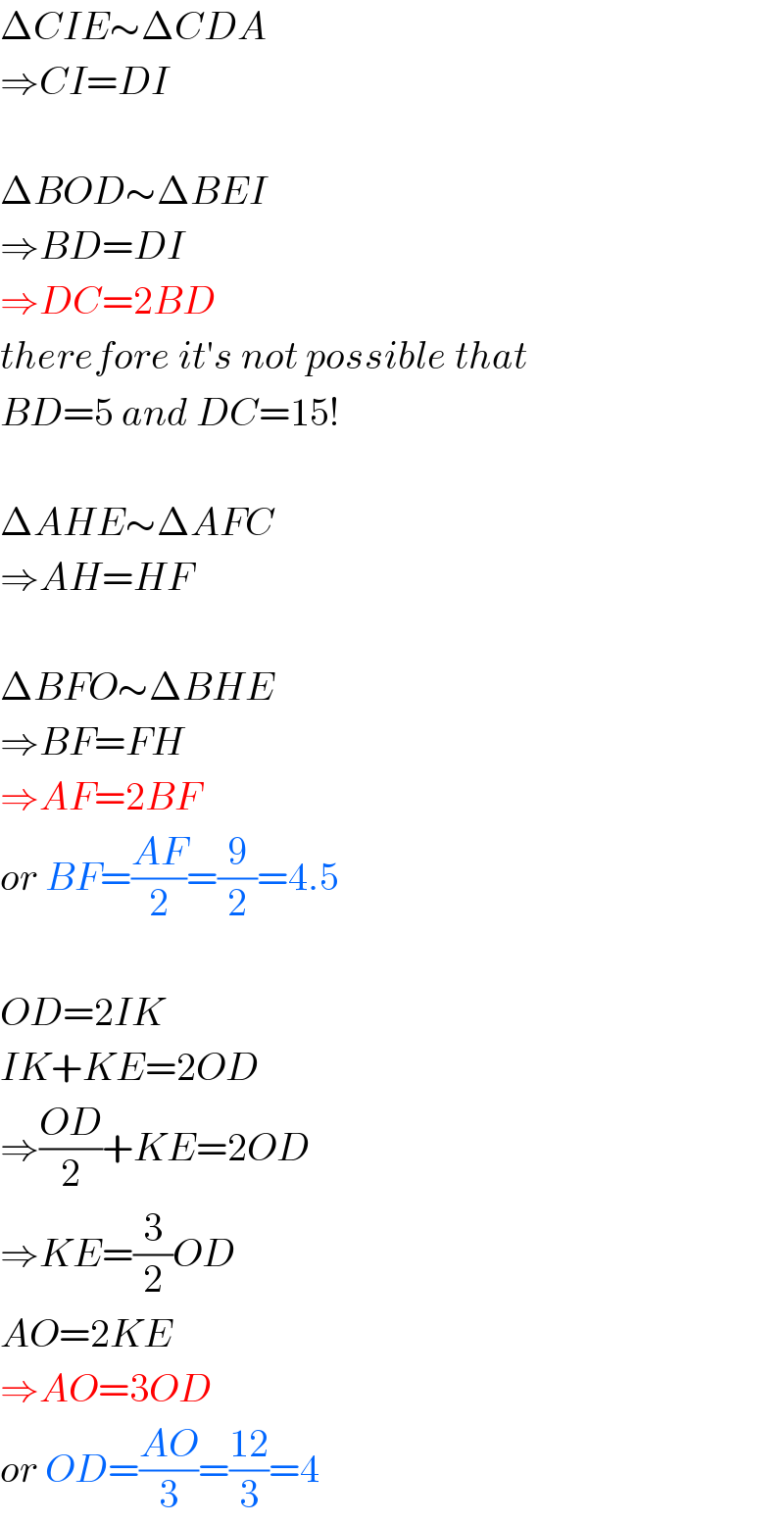
Question and Answers Forum
Question Number 29048 by $@ty@m last updated on 03/Feb/18

Commented by ajfour last updated on 04/Feb/18

Commented by $@ty@m last updated on 04/Feb/18

Commented by ajfour last updated on 04/Feb/18

Commented by ajfour last updated on 04/Feb/18

Commented by ajfour last updated on 04/Feb/18

Commented by NECx last updated on 03/Feb/18

Commented by $@ty@m last updated on 03/Feb/18

Commented by $@ty@m last updated on 03/Feb/18

Commented by $@ty@m last updated on 03/Feb/18

Commented by $@ty@m last updated on 03/Feb/18

Commented by Tinkutara last updated on 03/Feb/18
BF=3. This is direct application of Ceva's Theorem.
Commented by Tinkutara last updated on 03/Feb/18
OD=4
Commented by Tinkutara last updated on 03/Feb/18

Commented by $@ty@m last updated on 03/Feb/18

Commented by Tinkutara last updated on 03/Feb/18
http://ibb.co/keD4G6
Commented by Tinkutara last updated on 04/Feb/18
OD=3 or 4? What is the answer? I am getting two different answers.
Commented by Tinkutara last updated on 04/Feb/18
This way it comes 3.
Commented by Tinkutara last updated on 04/Feb/18

Commented by mrW2 last updated on 04/Feb/18

Answered by mrW2 last updated on 04/Feb/18

Commented by mrW2 last updated on 04/Feb/18

